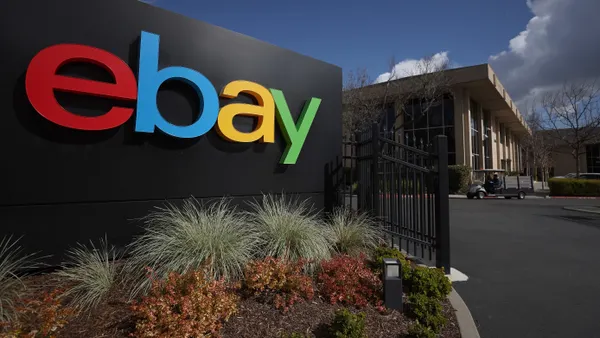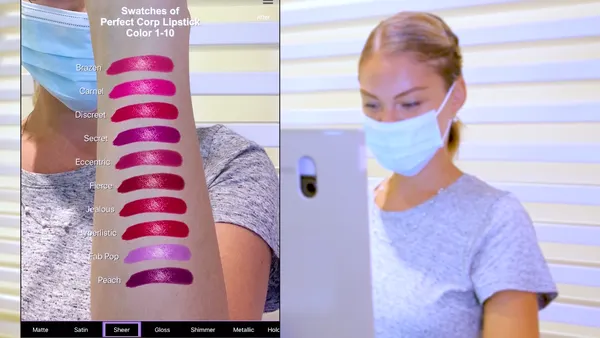Dive Brief:
- The first stop for 68% of mobile shoppers is a non-product page, according to a new report by Mobify. These might include blog, promotional or home pages, which should be optimized to load almost instantly from search results to keep customers from dropping off and thus increasing mobile traffic. Last year, Mobify reported that 48% of shoppers will likely drop off a slow-loading site before the first page even loads.
- Retailers have a short time to engage mobile shoppers. The average mobile session lasts 5 minutes 45 seconds, but half of users spend less than 3 minutes on sites.
- Once on a mobile site, customers spend an increasing amount of time on each step of the sales "funnel" — from product list page, to product display page, to shopping cart to checkout. Because they spend the most time checking out, retailers need to make this as painless as possible. The less friction they present customers, the more likely they will convert them into buyers, said the report.
Dive Insight:
The game in mobile shopping is to capture the customer for as long as possible and quickly move them through the shopping process — the "funnel" — until they get to checkout. The checkout transaction requires the most time, but that must be minimized for these time-sensitive shoppers, said the Mobify Q3 Mobile Commerce Insights Report.
"Mobile shoppers are constantly interrupted — it's an entirely different context than desktop shopping," said Mobify CEO Igor Faletski in a press release last year. "To be successful, retailers need to have mobile websites that perform as well as native apps, which — until now — has been impossible."
A recent study by Splitit said 87% of online shoppers would abandon shopping carts if the checkout process was too difficult, and 55% said they would abandon their carts and never return to the retailer's site. This is especially true for older consumers, with 90% of shoppers over 55 reporting that they would not follow through with a purchase and 7% would never return to the site after a lengthy checkout process.
The more progress shoppers make through the mobile retail funnel, the higher the likelihood that they will return if interrupted, which needs to be anticipated, said the Mobify report. For example, customers that reach the shopping cart reach a tipping point with a 33% chance of returning to the mobile commerce site within a week. Shoppers who put something in their shopping cart have a 2.6% return purchase rate compared to the 0.17% return purchase rate of those who don't add anything to their carts.
By optimizing all webpages in the process — and especially the non-product pages customers are most likely to land on — they can be turned into accelerated mobile pages (AMP). Instantly loading AMP pages and progressive web apps (PWA) will enable shoppers to add items to their shopping carts quickly. Customers that have added items to their carts can then be sent a cart abandonment web push notification to return and finish the transaction, the report said.
PWAs are an open-source initiative from Google that uses modern web capabilities to deliver app-like experiences. They promise a better experience than either native apps or the mobile web. PWAs that are well designed can reach speeds four times faster than other web sites, Faletski told Mobile Marketer late last year. They are "friction-free, so customers stay engaged, and can speed through checkout to buy a product with just a few taps," he said.











